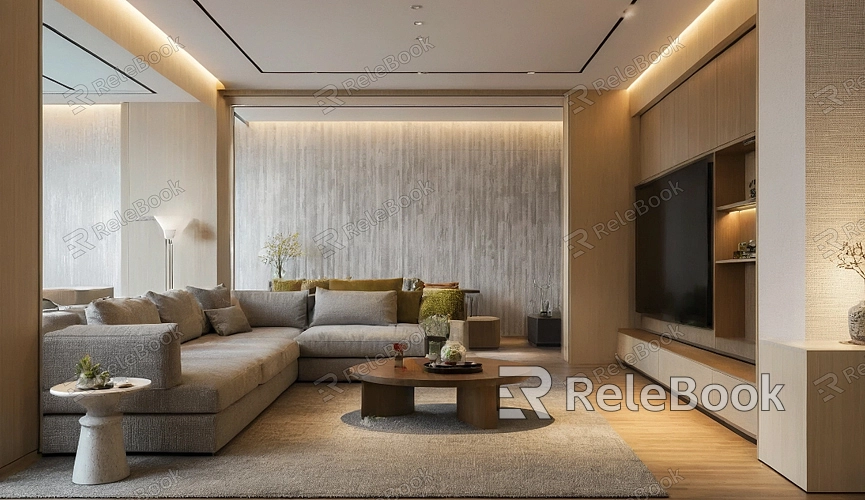How to Add Textures to 3D Models in Autodesk?
Textures not only add detail and realism but also effectively convey the material properties of objects. In Autodesk software, such as Maya and 3Ds Max, the process of adding textures to 3D models is relatively straightforward, but it does involve some key details to master. This article will provide a detailed guide on how to add textures to 3D models in Autodesk, along with practical tips and common FAQs.

Understanding the Basics of Textures
Before adding textures to a 3D model, it’s important to understand what a texture is. A texture is an image that can be applied to the surface of a 3D model to simulate various material effects, such as wood, metal, or fabric. By using textures, models can exhibit more complex visual effects than just a single color.
There are many types of textures, including color maps, normal maps, and reflection maps. Color maps define the base color of the model; normal maps simulate fine surface details; and reflection maps create realistic reflections under light.
Preparing the 3D Model
Before adding textures, you need to prepare the 3D model you want to texture. Open your chosen Autodesk software and either import your model or create a new one within the software. At this stage, ensure that the geometric shape of the model is complete and free of extra faces or incorrect normals.
1. Checking the Model's UV Unwrapping
A key step in adding textures to a 3D model is ensuring that the model's UV wrapping is correct. UV unwrapping is the process of mapping the surface of a 3D model to a 2D plane, allowing the texture to fit properly on the model. In Autodesk tools, you can use the UV editor to view and adjust the UV layout of the model.
If the UV unwrapping is improper, the texture may appear stretched or distorted on the model. Therefore, it’s essential to check and adjust the UV unwrapping before you start adding textures.

Creating and Importing Textures
Once you’ve confirmed that the UV layout of your model is correct, you can begin creating or importing textures. Depending on your needs, you can either use existing texture images or create your own.
1. Using Texture Images
If you choose to use existing texture images, you can find high-quality textures on many free and paid texture websites. After downloading the required images, import them into the Autodesk software.
In the software, locate the material editor, create a new material, and apply the downloaded texture image to the color channel of that material. You can also adjust other parameters in the material settings, such as reflectivity and glossiness, to achieve the desired effect.
2. Creating Custom Textures
If you want to create unique textures, you can use image editing software (like Photoshop) to design them. Based on the characteristics of your model, create suitable texture images. Once completed, export them in a supported format (like JPEG or PNG) and import them into the Autodesk software.
Applying Textures to the Model
After creating the material and importing the texture, you can apply the material to the model. In Autodesk's material editor, drag the created material onto the target model or assign it through the material panel after selecting the model.
1. Adjusting Material Parameters
Once the texture is applied, you may need to fine-tune the material parameters. Depending on the lighting conditions in the scene and the needs of the model, adjust the material’s reflectivity, refraction, and other visual effects. Continuously preview the results to ensure the texture appears natural on the model.
Refining and Testing the Effects
After applying the texture, don't rush to finish. At this stage, you need to refine and test the effects. Render the model and observe the results to ensure the texture performs well under various lighting conditions.
1. Rendering the Model
Use the software's rendering function to view the final results. Check the details of the textures and how they interact with the environment. If you notice anything unsatisfactory, you can return to the material editor to make adjustments or change the texture.
Saving and Exporting the Model
Once all adjustments are made, you can save and export the model. Be sure to save all related texture files for use in other software or to share with others.
When exporting the model, choose the appropriate file format based on your needs and ensure that the texture information is included. This will ensure that the textures display correctly when the model is opened in different environments.
The process of adding textures to 3D models in Autodesk is not a one-size-fits-all approach; it involves multiple steps, including model preparation, UV unwrapping, texture creation, material application, and effect adjustment. By effectively applying these steps, you can greatly enhance the visual quality and expressiveness of your models. Continuous practice and experimentation will help you become more familiar with this process.
I hope this article helps you better understand how to add textures to 3D models in Autodesk. You can download a variety of high-quality 3D models and textures from the Relebook website to further enhance your creative abilities.
FAQ
How can I ensure my textures look natural when adding them to Autodesk?
You can ensure natural-looking textures by properly unwrapping UVs and adjusting material parameters. Carefully check the fit of the texture and the lighting settings.
What should I do if my texture appears stretched on the model?
Stretching is usually caused by improper UV unwrapping. Use the UV editor to readjust the UV layout and ensure the texture fits correctly.
What texture image formats can I use?
Common formats include JPEG, PNG, and TIFF, all of which are typically supported by Autodesk software.
How do I choose the right texture image for my model?
Select texture images that match the material characteristics of your model and consider the overall atmosphere of the scene to ensure a harmonious final effect.

